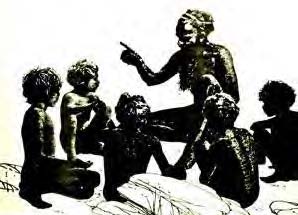Sixth Summer Research Program
“An experiment with a massive problem-solving dynamic which created a form for data gathering, consensus decision-making, and model building” (Council V Policy Statement, August 1970).
 500 participants helped create a Tactical System for the Local Church—a comprehensive set of tasks for a socio-spiritual experiment in the reconstruction of the Local Church. This work was documented in Tactics of the Local Church Experiment. The Local Church Experiment (LCX) was launched to bring self-consciousness to the dynamic of the Movemental Church. Corporate study of Theresa of Avila’s Interior Castles. The picture of the earth from space became a dominant symbol.
500 participants helped create a Tactical System for the Local Church—a comprehensive set of tasks for a socio-spiritual experiment in the reconstruction of the Local Church. This work was documented in Tactics of the Local Church Experiment. The Local Church Experiment (LCX) was launched to bring self-consciousness to the dynamic of the Movemental Church. Corporate study of Theresa of Avila’s Interior Castles. The picture of the earth from space became a dominant symbol.
 Council V of the Order Ecumenical
Council V of the Order Ecumenical
Research is done on Historical Orders. It grounds the concept and practice of “The New Religious” through experiments with the Ecclesiola, The Odyssey, The New Religious Mode (NRM) discourses, Luke, and Spirit Conversations. NRM, Solitaries and NRM Songs are developed and there is experimentation with the Canonical Hours. The local church auxiliary is affirmed and work is done on the spirit dynamics of the local church. (Dolores Morrill, The History of the Global Movement’s Assemble-ing, New York Region, 1979. [Italics added])
Room E is created as a research dynamic.
“Three week summer training institute in Perth included 20 Aboriginals. A bus full of movement people from Eastern Australia crosses and re-crosses Australia by bus” (Brian Stanfield, 1993).*
* Mowanjum (near Derby in the Kimberleys, Western Australia) was the first community after Fifth City to implement a full Community Reformulation program ( Jonathan Barker, April 29, 2015).
A highlight of our work was doing a consulting visit in the Spring of 1970 with the producers of Sesame Street in New York at their request, as they were looking for ways to develop a curriculum that would reach children living in economic poverty. They were amazed that a community based preschool would have such an advanced research-based approach to developing program. We as a team were using research from the University of IL, Harvard and Yale on infant development; which was complemented by the research work that I did on the Kibbutz-based Children’s Houses in Israel and on a orphanage in Tehran (Iran) doing research on infant intellectual stimulation (Elise Packard, May 2017).
Sandy Conant and Pat Tuecke were the first single women assigned as House Priors. ![]() The first houses were established in Montreal and Winnipeg, Canada, and in Perth and Brisbane, Australia (Brian Stanfield, 1993). Leadership teams called Troikas were assigned to each house. The first Global Odyssey was held during the summer.
The first houses were established in Montreal and Winnipeg, Canada, and in Perth and Brisbane, Australia (Brian Stanfield, 1993). Leadership teams called Troikas were assigned to each house. The first Global Odyssey was held during the summer.
First offspring of the 5th City experiment launched in the Australian Aboriginal community of Mowumjum and the community of Majuro in the Marshall Islands ( Brian Stanfield, 1992).
International Training Institutes were held in Ootacamund, India and in Hong Kong. Frequent UR parties were held. The first Vision, Contradictions, Strategies, and Tactics workshops were conducted at a 5th City Consult.
Corporate Reading Research Project (CRRP)
All of the Religious Houses participated in the CRRP (pronounced “creep”) during 1970–71. House members reviewed 2,000 (500 books, Stanfield, 1993) books in preparation for the 1971 Research Assembly. The summary sheets of each book or article were assembled into two 5″ ring binders.
“Everyone read books in the Economic, Political and Cultural arenas and summarized key insights. It was ‘edge’ stuff, but what we were really pushing for were the functions of each societal dynamic. We sent in the results of reading prior to the summer program where the results were tabulated and translated into the more detailed levels of the Social Process Triangles. I forget how many thousands of books were read, but I recall the excitement of being a part of such a huge and innovative method of social research” (Catherine Welch, 1992).
 The Order Ecumenical
The Order Ecumenical
In the ’70s the Order:Ecumenical was a family order of 1,400 adults and 600 children of 23 nationalities. The Order formed the permanent staff, first of EI, then of ICA (Brian Stanfield, The History of ICA).

